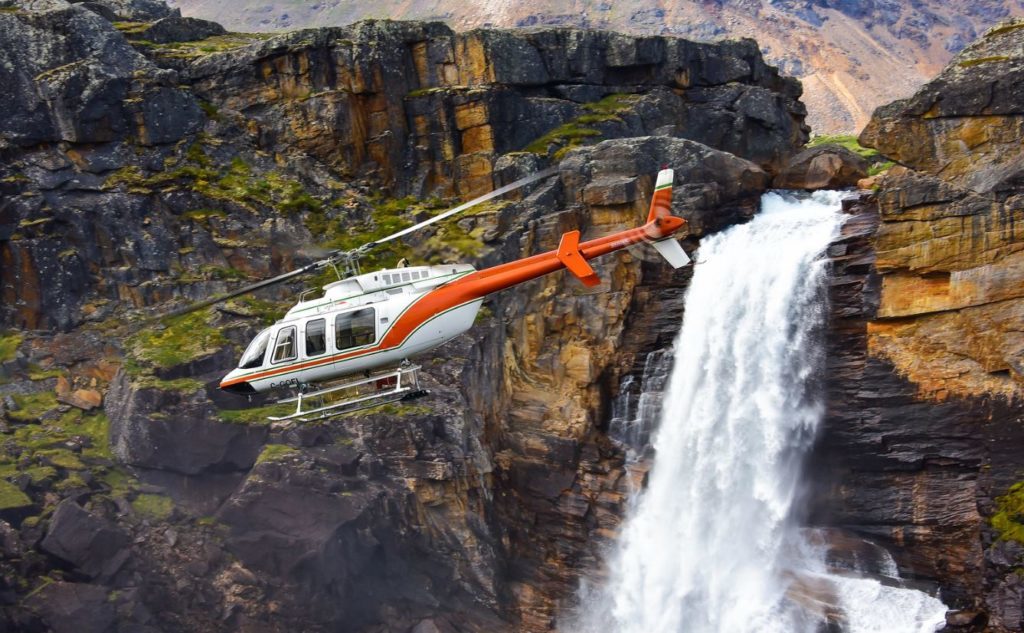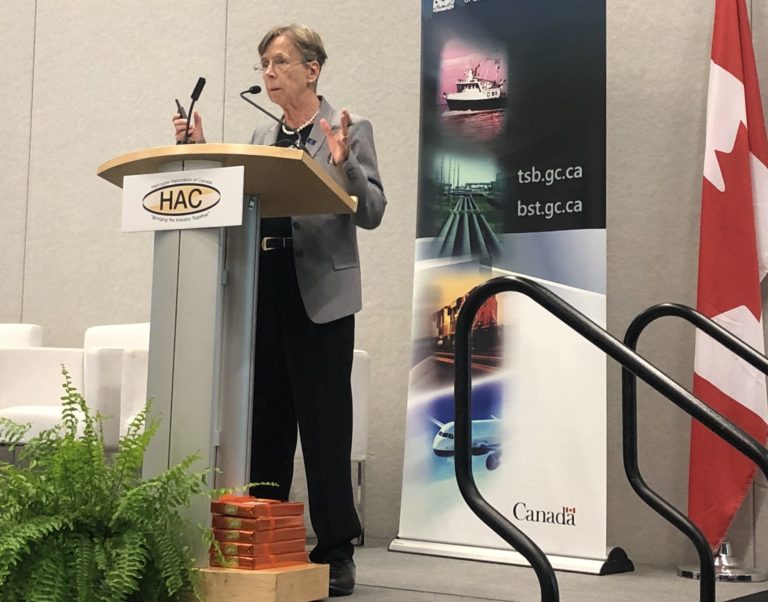Estimated reading time 7 minutes, 14 seconds.
A collaborative effort will be required from all industry stakeholders to address the air taxi sector’s accident and fatality rate, Transportation Safety Board of Canada (TSB) chair Kathy Fox told attendees at the Helicopter Association of Canada’s annual convention.

Speaking during a presentation at the event, which was held Nov. 14 to 16 in Vancouver, B.C., Fox gave more detail on the TSB’s recently released report “Raising the bar on safety: Reducing the risks associated with air taxi operations in Canada.”
While commercial aviation has an improving safety record in Canada, aircraft operating in the air taxi segment still represent more than half of all the accidents and fatalities in Canadian commercial aviation.
Among a raft of issues the report identified and recommendations it makes, Fox highlighted the need for industry and the regulator to “raise the bar” for safety to level what she called an “uneven playing field” faced by operators.
During the TSB’s investigation, she said it encountered operators who were going above and beyond regulations in terms of adopting safety-enhancing operating practices and measures, or installing new technology, and operators who were doing the bare minimum required.
“When it comes to competing against somebody who hasn’t taken those extra steps, who’s just doing the bare minimum to get by, they’re at an uneven playing field, because they can’t offer [a service] at the same price,” said Fox.
“Part of the education with clients may be to indicate that the lowest cost doesn’t necessarily mean that it’s the best or safest option. I think there’s a general perception among clients that, ‘Well, it’s regulated by Transport Canada, therefore one operator is as good as another.’ But when it comes to safety investments, there’s a clear difference. So we think that by raising the bar for everyone, that will help to level that playing field.”
The TSB’s investigation looked at the data from 2000 to 2014, during which there were 240 helicopter accidents in the air-taxi sector, and 35 of these were fatal. Unlike with fixed-wing aircraft in the segment, the TSB said there had been no clear decrease in the number of helicopter accidents over time.
From this data, the TSB identified 23 different accident types, nine of which were related to helicopters.
One of these — visual flight rules flight into instrument meteorological conditions resulting in loss of control or controlled flight into terrain — represented 12 per cent of all helicopter-related air taxi accidents, but resulted in the highest proportion of fatalities. Fox noted that, of all the accident types, it involved the most experienced pilots, with an average of 6,800 hours.
The TSB then conducted 125 interviews with operators to find out what they perceived to be their most significant risks, what they were doing to lessen them, and more they believed needs to be done.

From this information, the organization identified 19 safety themes, from infrastructure, to fatigue, training, and regulatory oversight. The TSB talked to operators about how they were managing these safety issues, and identified best practices — which Fox encouraged operators to take a look at.
“What we learned really is that there are two key underlying factors. . . in all accidents that have happened during the study period,” said Fox. “One is the acceptance of unsafe operating practices, and the second is inadequate management of operational hazards.”
Unsafe practices, she said, included things like pushing the weather, taking off overweight, or not recording defects during a flight in a log.
Operational hazards included the level of operational control, crew pairing, the training an operator provides, or support the management provides personnel.
“We know that operators, by and large, are striving to operate safely,” said Fox. “But any operator can get caught with these two factors over time, unwittingly endorsing unsafe practices or not adequately managing operational risk. . . . What we’re really talking about here is a slow incremental drift.”
As a result of the investigation, the TSB has added four new recommendations to its 22 existing recommendations that apply to the air taxi sector.
The first is for the Department of Transport to collaborate with industry associations to develop strategies, education products and tools to help air taxi operators and clients eliminate the acceptance of unsafe practices.
“That’s going to mean changing a lot of attitudes about what’s acceptable,” said Fox.
The TSB also recommended that industry associations work to actively promote safety management systems and safety cultures among their members, and encourage operators to share data.
“We believe a lot can be done by operators themselves and by industry without waiting for Transport Canada,” said Fox. “You can exert peer pressure or other forms of incentives to help operators raise the bar.”
Third, the TSB recommended that the Department of Transport review gaps it found during its investigation, and update regulations and standards. For example, Fox said, there is no specialized training required by the regulator for pilots to operate in mountains, and the process that operators must go through in order to update technology in aircraft is arduous.
“Operators want to update their technology, but the process they have to go through to do so is extremely costly and burdensome,” said Fox.
The final recommendation calls for the Department of Transport to require operators to collect and report hours flown and movement data by Canadian Aviation Regulation subpart and aircraft type.
Fox said it would take a collaborative effort from clients, passengers, crews, operators, Transport Canada and industry associations to address the underlying factors behind the air taxi sector’s accident rate. “Everybody has to work together in order to improve the safety of air taxi performance,” she said.








